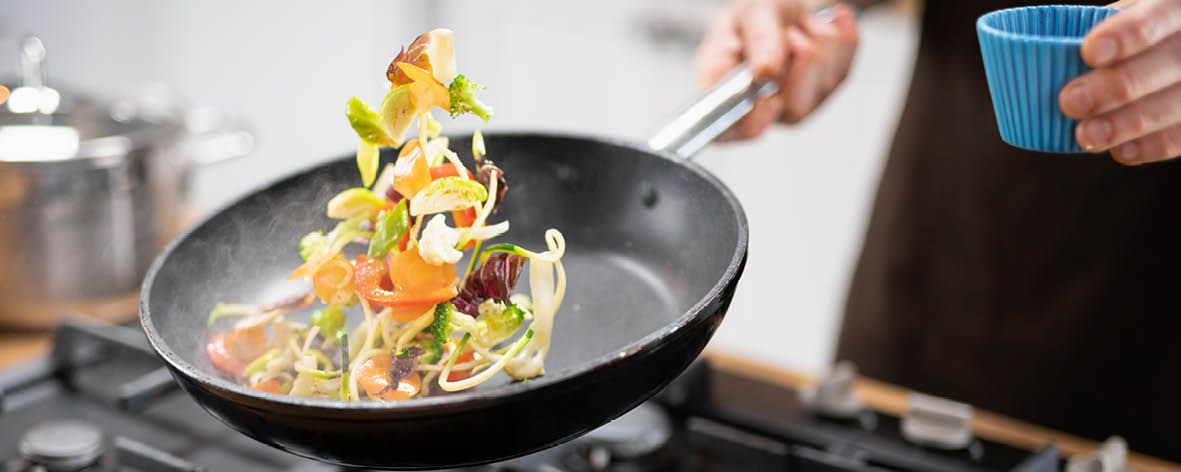All you need to know about … sautéing

If you’ve ever watched a cooking program, you’ll have seen chefs combining ingredients together in a frying pan with a deft flick of the wrist. This action is part of the process of sautéing. Sautéing is a useful cooking technique that can be used for a range of foods from vegetables to proteins and is ideal for achieving tasty food in a short amount of time. The fast cook time and relatively low amount of oil used means that sautéed food retains its nutrients and does not lose texture or become mushy.
You can sauté many different types of food, including minced meats, chicken breasts and vegetables. It is best to stick to tender cuts of meat or thinner pieces of chicken, pork or fish. Similarly, while softer vegetables like beans, onions, mushrooms, capsicum and asparagus are ideal for sautéing, harder vegetables are best par-cooked before sautéing.
Sauté comes from the French word “sauter”, which means “to jump.” It is likely that the term originated due to the sizzle and jump that this high-heat method of cooking produces when food hits the pan. Sautéing is done in an open pan such as a frying pan or sauté pan on the stovetop. The use of a small amount of oil helps to stop food from sticking to the pan but it is also important for conducting heat and browning the surface of the food.
When sautéing, the food is let rest at times during the cooking process. This differentiates it from other methods such as stir-frying where the food is kept in constant motion. Choosing the right type of pan is essential for sautéing. The pan should be shallow (wider than it is tall) so that the heat is distributed evenly without burning the food. The pan should also be large enough to fit the food in a single layer without overlaps (if your pan is not big enough try sautéing in batches). This will encourage quick evaporation, however you don’t want too much empty space because this can lead to burnt oil.
To prepare food for sautéing, make sure that it is cut into uniformly sized pieces to ensure that it cooks evenly. If you are sautéing different foods together, think about the density of the foods and adjust their sizes accordingly. For example, because a carrot is harder than a mushroom you should cut the carrot smaller. Another important step to achieve great results is to blot any excess moisture form the food you want to sauté; this will stop the food from steaming.
Choose an oil with a high smoke point such as butter, olive oil, canola oil, avocado oil and peanut oil and only use enough oil to keep the pan lubricated as too much fat will fry the food rather than sautéing it.

